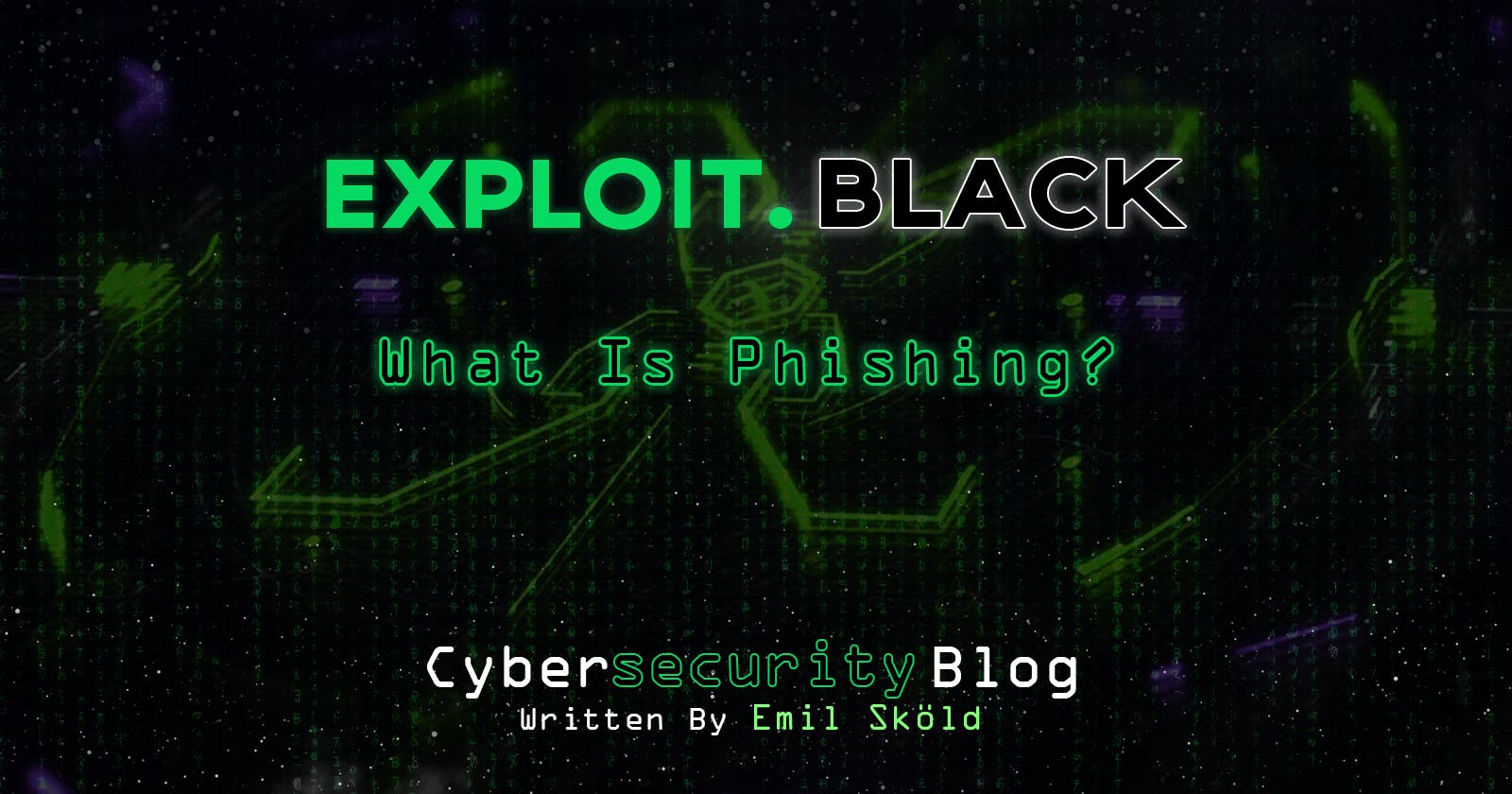Table of contents
- What exactly is Phishing?
- How is Phishing conducted?
- Examples of phishing attack types
- Email Scamming
- Here is an example of a fraudulent PayPal email.
- Targeted Phishing
- Copycat phishing
- Whaling
- Phishing is defined as
- How phishing scams operate
- Who is the target of Phishing?
- Variations in phishing scams
- Catphishing
- Targeted Phishing
- Phishing via whales
- How to recognize phishing attacks
- Examples of attempted Phishing
- How do I safeguard myself from Phishing?
- Why is Phishing so successful?
- How can my firm enhance its awareness of Phishing?
- How do I recognize Phishing?

What Is Phishing? What Is Scam Email? Phishing | What Is Phishing? What Is Scam Email?
The information is then utilized to access sensitive accounts, which can lead to identity theft and monetary loss.
In 2004, the first phishing lawsuit was filed against a Californian teenager who had developed a replica of the America Online website. With the help of this phony website, he could obtain sensitive information from customers and access their credit card information to withdraw money from their accounts. Other than email and internet Phishing, fraudsters are continually developing new phishing strategies, such as 'vishing' (voice phishing) and smishing (SMS Phishing).
What exactly is Phishing?
Phishing is a cybercrime in which fraudsters disguise themselves as trustworthy sources to obtain sensitive information or data from you. Phishers utilize numerous platforms.
The end objective, regardless of the approach employed? They desire your personal information to gain access to your bank accounts and credit cards. And they will send innumerable bogus email and text messages worldwide in the hopes of duping enough individuals into revealing this critical information.
Some phishing emails or texts may appear unprofessional, employing poor grammar or requesting that you click on links with strange URLs. However, phishers need not be sophisticated. These cybercriminals operate in mass quantities and require only a small number of victims to consider their activity successful.
In 2018, the Federal Trade Commission cited a phishing effort on Netflix members as an example. The phishing email alerted recipients that Netflix was "having some problems" accessing their billing information. The letter requested that victims adjust their payment method by clicking a link. This link did not lead to Netflix but a bogus website established by the fraudsters.
How do you avoid being one of these unfortunate victims? It is essential to learn how to identify phishing scams and resolve to never click on a link in a text message or email purporting to come from a bank, credit card company, or other reputable organization. And that does not include the phishing emails that your spam filter catches.
How is Phishing conducted?
However, while defining Phishing, not all assaults have the same appearance and operation. Phishing scams can take a variety of shapes and have a variety of deployment objectives.
Examples of phishing attack types
Different types of phishing schemes exist. Some phishing emails will request that you click on a link to avert the closure of your bank account or credit card. When you click the link, you will be redirected to a page that requests your financial information. That could facilitate identity theft.
Other phishing attempts need you to click a link to confirm ownership of a credit card or bank account. Again, this link will lead you to a bogus website that will request sensitive personal or financial information that is likely to be collected by cybercriminals.
You may receive a scam email indicating that your email account is complete and at risk of closure. The email cautions that you will lose access to your email messages if you do not click on a link. Again, such links may seek and collect your personal information or install malware or adware on your machine.
The regrettable truth? There are a variety of phishing attack types. It will help if you remain vigilant for all of them.
Email Scamming
The standard phishing email is sent by fraudsters posing as reputable businesses, typically banks or credit card agencies. The purpose of these emails is to deceive you into divulging sensitive information, such as credit card details or Social Security numbers.
Other phishing emails may attempt to entice you to click on a link that leads to a false website meant to resemble Amazon, eBay, or your bank. These fraudulent websites can install malware or other infections directly onto your computer, enabling hackers to steal your personal information or take control of your computer, tablet, or smartphone. Smartphone.
A phishing instance? You may receive an email that appears to have been sent by PayPal. The email may instruct you to click a link to validate your PayPal account. If you don't? This email informs you that your PayPal account will be terminated.
Here is an example of a fraudulent PayPal email.
This is a hoax. You will be redirected to a bogus PayPal-looking login page if you click on the link. If you input your username and password, the scammers will obtain this data.
These emails typically contain misspellings, strange grammar, and generic salutations such as "Dear User" or "Dear Client." Frequently, the links you're required to visit will lead to websites with URLs or spellings that differ somewhat from the institution's official website.
Never will PayPal, credit card firms, mortgage lenders, or banks approach you through email to solicit personal information. Instead of clicking on links in emails, you should manually log into your account. If there is a valid concern, it will be displayed when you log in.
How to identify fraudulent emails
When sending phishing emails, fraudsters have become increasingly adept. However, there are still specific indicators to watch for.
Targeted Phishing
While most phishing emails are addressed to vast groups of recipients, spear phishing is a more targeted form of assault.
Spear-phishing emails are directed at a particular individual, company, or organization. And in contrast to more generic phishing emails, the crooks who send them to take the time to research their targets. Occasionally, the practice is referred to as social engineering. These thieves will send emails that appear to originate from genuine sources.
In 2016, millions of Amazon customers who had placed a purchase received an email with the subject line "Your Amazon.com order has been shipped," followed by an order code. When recipients opened the email, only one attachment was visible. If buyers open the attachment, ransomware may be installed on their computers.
In another example of spear phishing, emails may target a firm employee. The email may look to originate from the manager, and it asks for access to confidential company information. If the spear-phishing target is deceived, it could result in a data breach in which company or employee information is stolen.
Copycat phishing
Clone phishing may be one of the most challenging types of Phishing to identify. In this form of phishing assault, scammers create an email nearly identical to one that victims have already received.
The cloned email is sent from an address virtually identical to the address used by the original sender of the message. The email's body also has the same design. What is distinct? The message's attachment or link has been modified. If victims click on these links, they will be redirected to a false website, or an infected branch will be opened.
Whaling
Sometimes, phishers target the most prominent targets, known as whales. Chief executive officers, chief operating officers, and other high-ranking firm executives are the targets of whaling assaults. The objective is to deceive these influential individuals into divulging the most sensitive corporate information. These assaults are more complex than standard phishing scams and require extensive investigation by scammers. Typically, they rely on phony emails that appear to originate from reputable individuals within the organization or outside agencies.
Phishing is an attempt to obtain sensitive information by impersonating a trustworthy source. Read on to learn how to identify phishing attempts.
Phishing is defined as
Phishing is an attack in which the threat actor pretends as a trustworthy individual or organization to deceive potential victims into divulging critical information or paying money. As with actual fishing, there are multiple ways to catch a victim: Phishing, smishing, and vishing are three typical forms of email fraud. Some attackers employ a targeted strategy, such as spear or whale phishing (more on the types of Phishing below).
How phishing scams operate
Phishing assaults commence with the threat actor sending a message while posing as a trustworthy or well-known individual. The sender requests a response from the receiver, frequently indicating a sense of urgency. If victims fall for the fraud, they may divulge vital information that costs them. Here are further insights about how phishing attacks operate:
Who is the target of Phishing?
A phishing assault can target anyone; however, wide varieties of phishing target particular individuals. Some threat actors will send an email to a large number of people with the hope that a few will fall for the lure based on a shared characteristic. For instance, if something is wrong with your Facebook or Amazon account, you must immediately visit this link to log in and correct it. The link likely leads to a faked website where you may enter your login information.
Suppose threat actors target anything specific, such as access to a particular company's network or data or information from a politician or political candidate. In that case, they employ more targeted phishing assaults. It is known as spear phishing. In this situation, they may conduct research to make their attack appear familiar and genuine, increasing the likelihood that the target may click a link or supply information. An example would be researching the name and communication style of the CEO of a target company, then writing or messaging individual company workers posing as the CEO and requesting something.
While threat actors frequently pose as CEOs in their phishing assaults, sometimes the CEO himself is the target. "Whale phishing" refers to phishing attempts directed at high-profile persons, such as company executives, celebrities, and well-known wealthy people. Anyone can become a phishing target, whether the attack is general or highly targeted, sent to one person or thousands.
Variations in phishing scams
The fundamental element of all phishing attempts, notwithstanding their diversity, is the employment of a fake pretext to gain goods. Some major categories include:
Email phishing is one of the most used phishing techniques. It has been prevalent since the beginning of the email. The attacker sends an email posing as a trustworthy and well-known entity (online retailer, bank, social media firm, etc.) and requests that you click a link to perform a crucial activity or download an attachment.
The following are some specific examples of email phishing:
Vishing (voice call phishing)With phone-based phishing attacks, often known as voice phishing or "vishing," the imposter poses as your local bank, the police, or even the Internal Revenue Service. Next, they threaten you with a problem and demand that you resolve it immediately by providing account details or paying a fine. They typically request payment via wire transfer or prepaid cards, making them tough to track.
Smishing (SMS or text message phishing)
SMS phishing, sometimes known as "smishing," is the evil twin of vishing, executing the same fraud (sometimes with an embedded malicious link to click) using SMS texting.
Catphishing
What about catfishing? It is Phishing with a romantic twist in either case. Catfishing is described in our post-Bad romance: catfishing. According to the article:
Catfishing (spelled with an "f") is a form of online deceit in which a person creates a presence in social networks as a sock puppet or a false online persona to lure someone into a relationship (often a romantic one) for the aim of obtaining money, gifts, or attention. Catfishing (spelled with a "ph") is similar to spear phishing. Still, the goal is to develop rapport and (therefore) access to information or resources to which the unwitting target has access.
Targeted Phishing
Spear phishing is targeted, whereas most phishing attempts send mass emails to as many people as possible. Spear phishing targets a specific individual or organization, frequently with custom-tailored material for the victim or victims. Surveillance before an attack is necessary to discover names, job titles, and email addresses. The hackers comb the internet to match this information with other studied data on the target's coworkers and the identities and professional relationships of the target's organization's essential employees. With this information, the phisher creates a plausible email.
For instance, a fraudster may use spear-phishing to target an employee with authority to authorize payments. The email appears to be from a corporate executive and instructs the recipient to submit a significant amount to the executive or to a firm vendor (when the malicious payment link sends it to the attacker).
A lengthy phishing email purporting to be from a Nigerian prince is one of the first and longest-running frauds on the internet.
Phishing via whales
Whale phishing is precisely what it sounds like: Phishing that targets prominent individuals. This includes celebrities, politicians, and C-suite executives. Typically, the attacker is attempting to obtain personal information or corporate credentials from these well-known targets. Typically, whaling attacks entail social engineering to convince the victim to believe the deceit.
How to recognize phishing attacks
Identifying a phishing attempt is not always straightforward. Still, a few tips, discipline, and common sense will go a long way. Look for something odd or out of place. Determine whether the message passes the "smell test." Trust your intuition, but do not allow yourself to be overcome by fear. Fear is frequently used in phishing attacks to impair your judgment.
Here are some additional indicators of a phishing attempt:
Examples of attempted Phishing
Here is an example of a phishing effort that impersonates a PayPal email and requests that the recipient click the "Confirm Now" button. While hovering over the controller, the proper URL destination is shown in the red rectangle.
Here is yet another phishing attempting, claiming to be from Amazon this time. Note the warning that the account will be closed if no response is received within 48 hours.
When you click on the link, you are directed to this form, which requests the information the phisher needs to steal your valuables:
How do I safeguard myself from Phishing?
As noted previously, Phishing is a threat that can manifest on desktop computers, laptops, tablets, and smartphones. Most Internet browsers offer methods for determining whether a link is safe. Still, your judgment is your first line of defense against Phishing. Whenever you check your email, read Facebook postings, or play your favorite online game, you should train yourself to detect the indications of Phishing and practice safe computing.
Again from our own Adam Kujawa, here are a handful of essential safety practices:
We always suggest installing antivirus/anti-malware software such as Malwarebytes Premium. Even if you fall for a cunning phishing attempt, most cybersecurity software can detect whether a link or attachment isn't what it seems so that you won't share your information with the wrong people. Even before purchasing, Malwarebytes can be tried for free.
Be attentive, take precautions, and watch out for phishing attempts.
Why is Phishing so successful?
Unlike other online risks, Phishing does not require a high level of technical sophistication. In fact, according to Adam Kujawa, director of Malwarebytes Labs, "Phishing is the simplest yet most hazardous and effective form of cyberattack. This is due to the fact that it targets the most vulnerable and powerful computer on the planet: the human brain."
Phishing is the most basic form of a cyberattack but also the most hazardous and effective.
Phishers do not attempt to attack a technical flaw in your device's operating system; instead, they employ social engineering. No operating system, regardless of the strength of its security, is safe from Phishing, from Windows and iPhones to Macs and Androids. In actuality, attackers frequently resort to Phishing when they cannot identify any technical weaknesses. Why spend time penetrating multiple layers of security when you can convince someone to give you the key? In most cases, the weakest link in a security system is not a bug buried in computer code but rather a person who does not double-check the origin of an email. What Is Scam Email? Phishing Examples & Test - Cisco Contact Cisco
How can my firm enhance its awareness of Phishing?
There is no single cybersecurity solution capable of preventing all phishing attempts. Your organization should consider a tiered security approach to decrease the frequency and severity of phishing assaults. This strategy incorporates staff awareness training. When an assault passes your security measures, your workers are generally the last line of defense.
Learn how to account for phishing attempts, how to spot them, and what to do if you suspect you may have fallen victim to one. Take our Phishing Awareness Quiz to test your phishing knowledge.
How do I recognize Phishing?
Examining hypertext links is one of the most excellent techniques to identify a phishing assault on any email client—an image claiming to be from Amazon this time. Note the warning that the account will be closed if no response is received within 48 hours. When you click on the link, you are directed to this form, which requests the information the phisher needs to steal your valuables.
Remember that if anything seems too good to be true, it likely is.
References:
> PHISHING - "What is phishing"
> US - "Internetsecurity online scams what is phishing"
> MALWAREBYTES - "Phishing"
> CISCO - "What is phishing"


